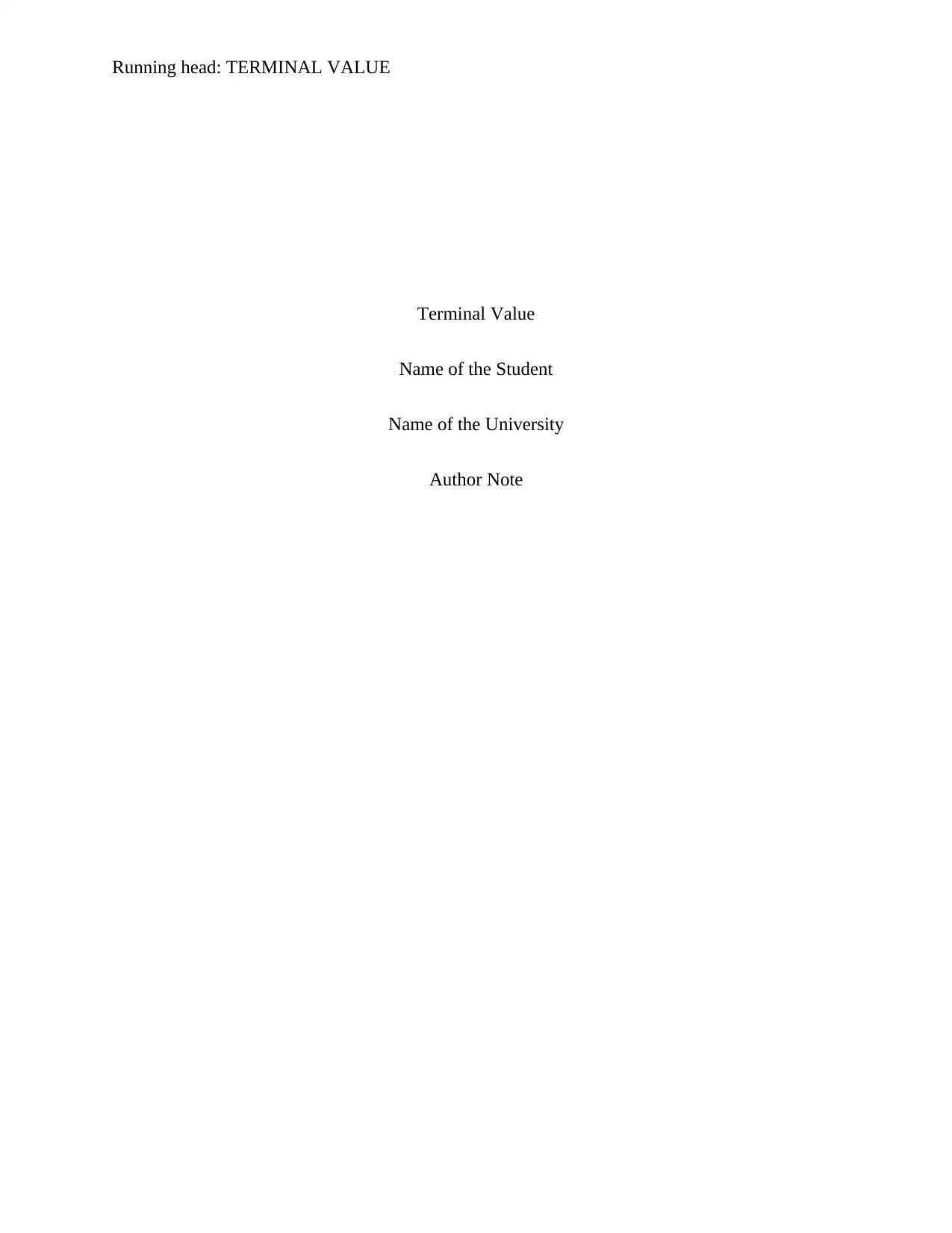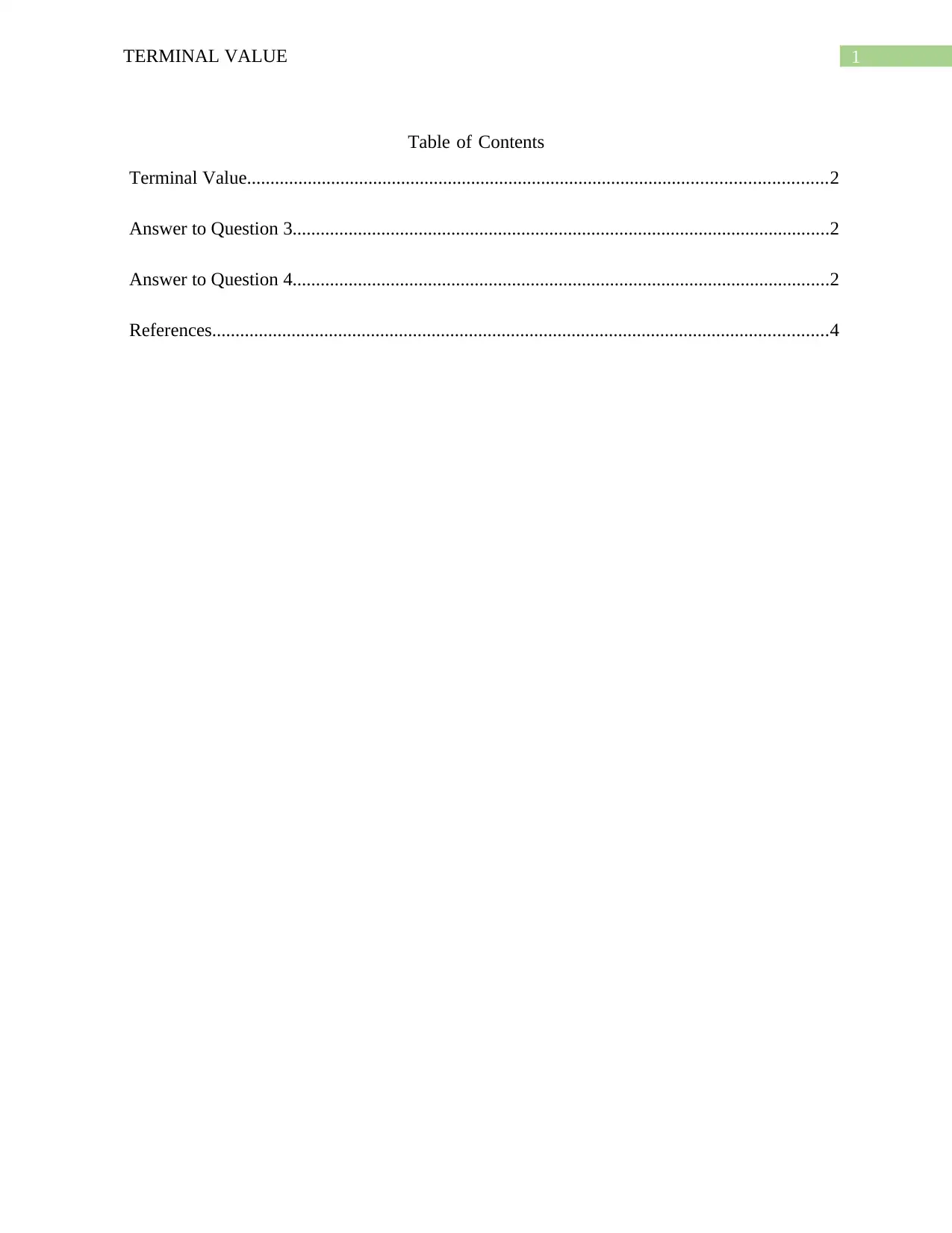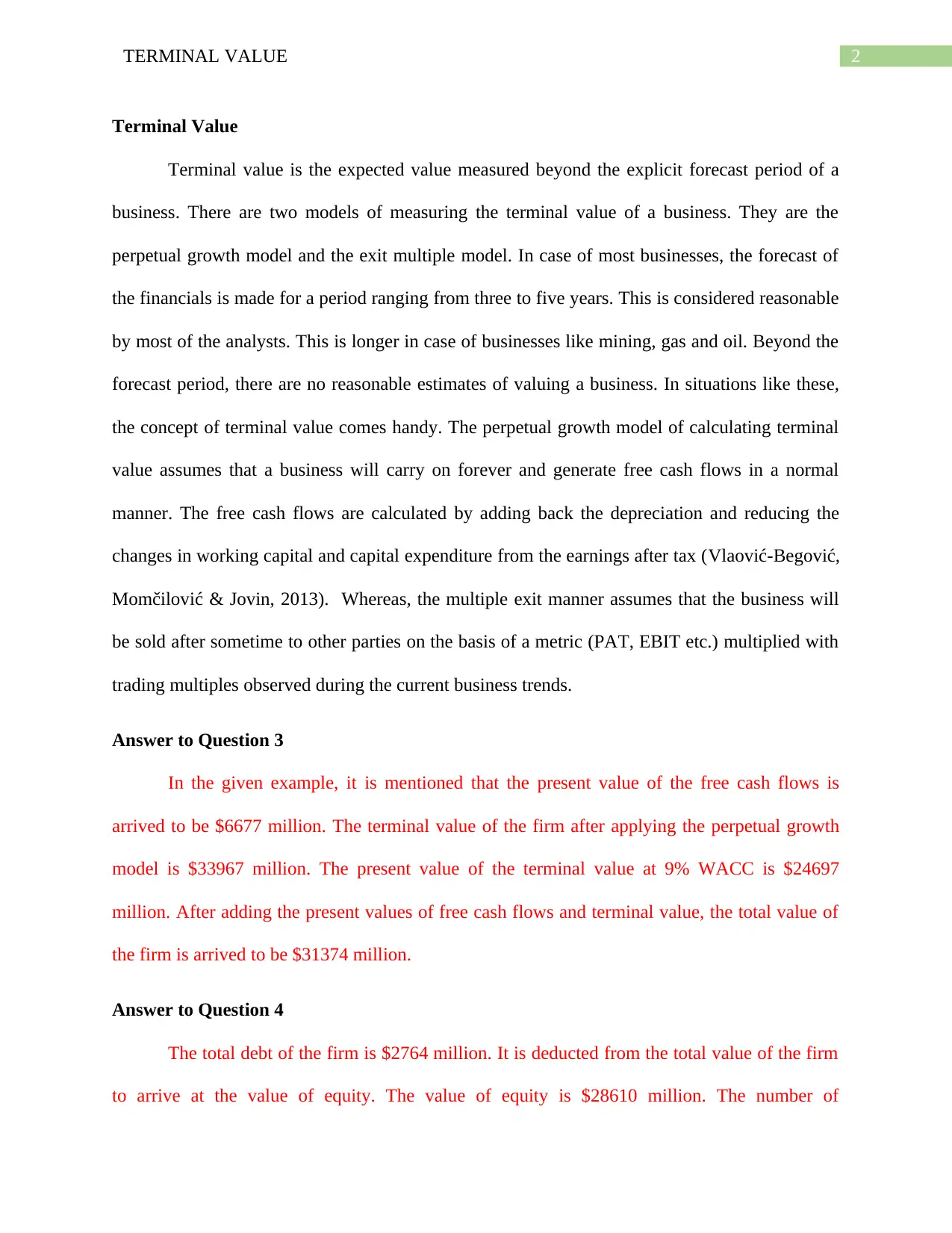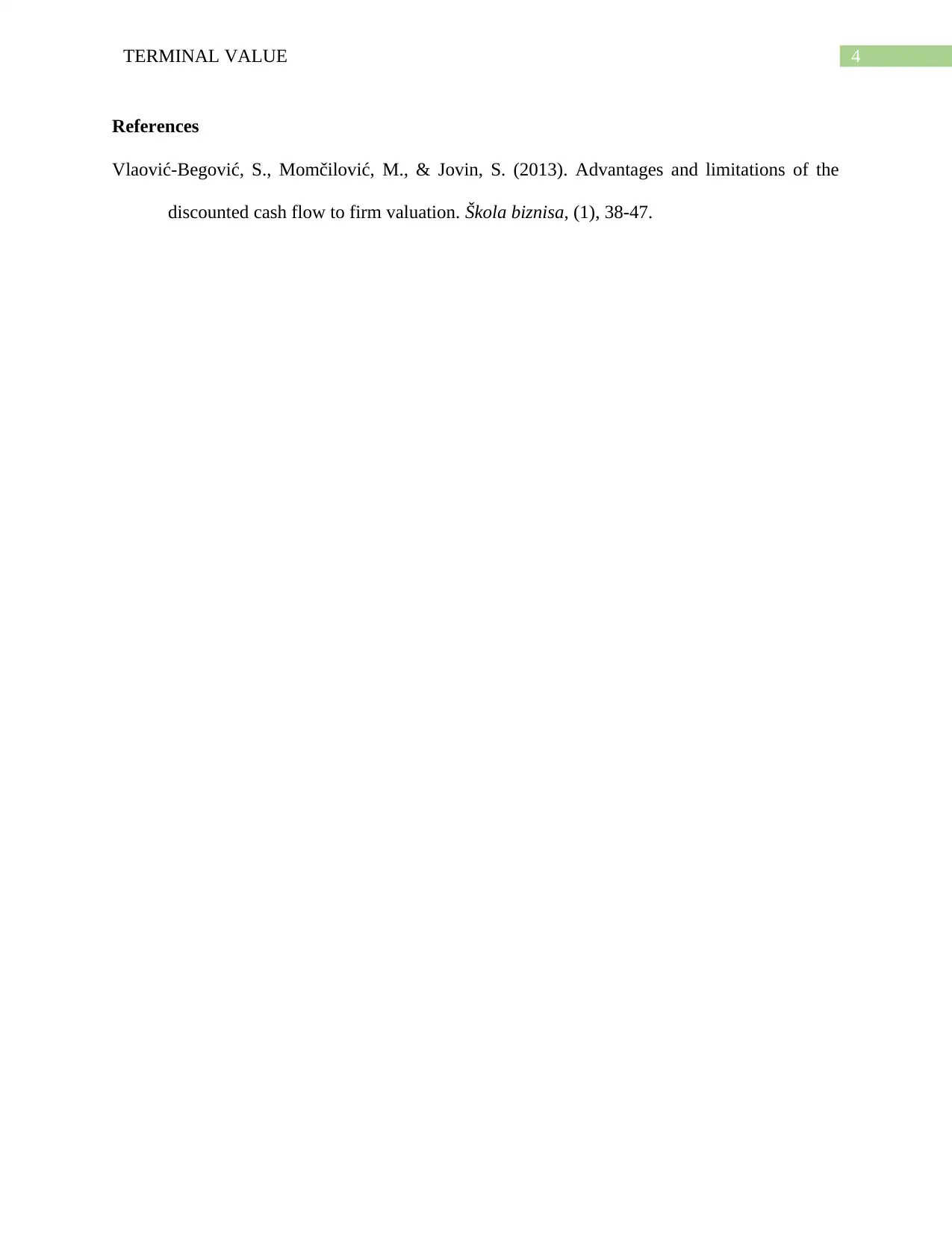Finance Report: Terminal Value Analysis and Valuation Methods
VerifiedAdded on 2023/01/20
|5
|473
|63
Report
AI Summary
This report provides an analysis of terminal value, a crucial concept in financial valuation, particularly when projecting cash flows beyond a specific period. The report discusses the two primary models for calculating terminal value: the perpetual growth model and the exit multiple model. The perpetual growth model assumes a business's ability to generate free cash flows indefinitely, while the exit multiple model uses trading multiples to estimate the value. The report includes a practical example demonstrating the calculation of terminal value and the overall valuation of a firm, considering free cash flows, the present value of terminal value, and the firm's debt to determine the equity value per share. The report highlights the importance of these valuation techniques in making informed financial decisions. The report also presents the calculation of the per share value of the company.
1 out of 5












![[object Object]](/_next/static/media/star-bottom.7253800d.svg)